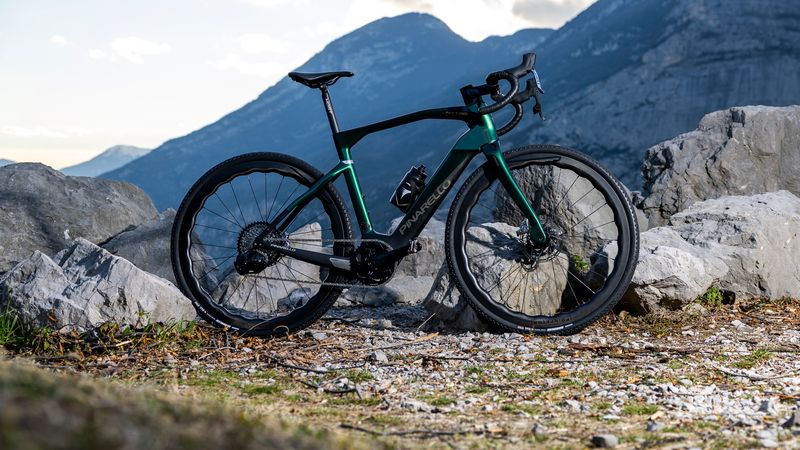The best electric bikes have really gained a foothold in the market over the last few years. Day to day they appear to be the preserve of commuters and delivery riders, either on dedicated eclectic bikes or homemade options thanks to e-bike conversion kits. At the other end of the spectrum, there are an increasing number of high-end, high-performance electric road bikes that instead of going for maximum power or utility aim to mimic as best they can the feel of a non-assisted road bike. The new Pinarello Nytro E range very much falls into that category, prioritising low weight and handling.
It’s not just an electric road bike, however; there is a gravel model too, and an all-road flat bar version sharing the same geometry of the gravel model, just with a very different build.
Power assisted, but still lightweight
At the heart of each of the road, gravel, and allroad bikes is a new mid-drive motor. The TQ-HPR50 unit (catchy name, right?), in combination with a 360Wh battery, adds only 3.9kg to the total system weight. In return, you get 50Nm of torque and a 300 Watt boost. The motor has been designed for low weight, but also for low size so as to maintain as close a Q factor as possible to better mimic the feel of riding a standard road or gravel bike.
Moreover, the motor has been designed to be silent. The shape of the bike, the larger downtube, and the integrated LED display may give away that you’ve got power assistance, but the sound of the motor shouldn’t give you away. At 11.4kg the road model doesn’t compare to a high-end road bike, but it’s comparable to some touring bikes and is the lightest electric bike of its kind on the market.
The road model especially is clearly inspired by and shares the design features of the Dogma F, and the new Pinarello F that we test rode recently. The same visuals, the same cable integration and cockpits, and the same asymmetrical design to better cope with the forces of braking and power transfer (which is presumably even more important with a 300Watt boost).
It may seem like aerodynamics would be less of a concern when you have a motor in the bottom bracket and a battery in the downtube, but the more slippery the bike (and the rider), the less power assistance you need and therefore the range increases, so opting for the same truncated aerofoil tube shapes as the Dogma and F ranges makes sense from this standpoint…
Click Here to Read the Full Original Article at CyclingNews RSS Feed…

